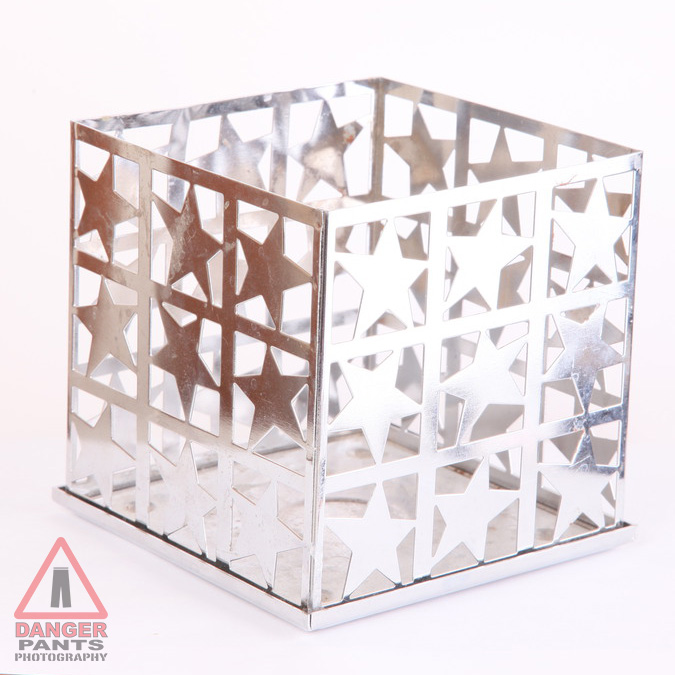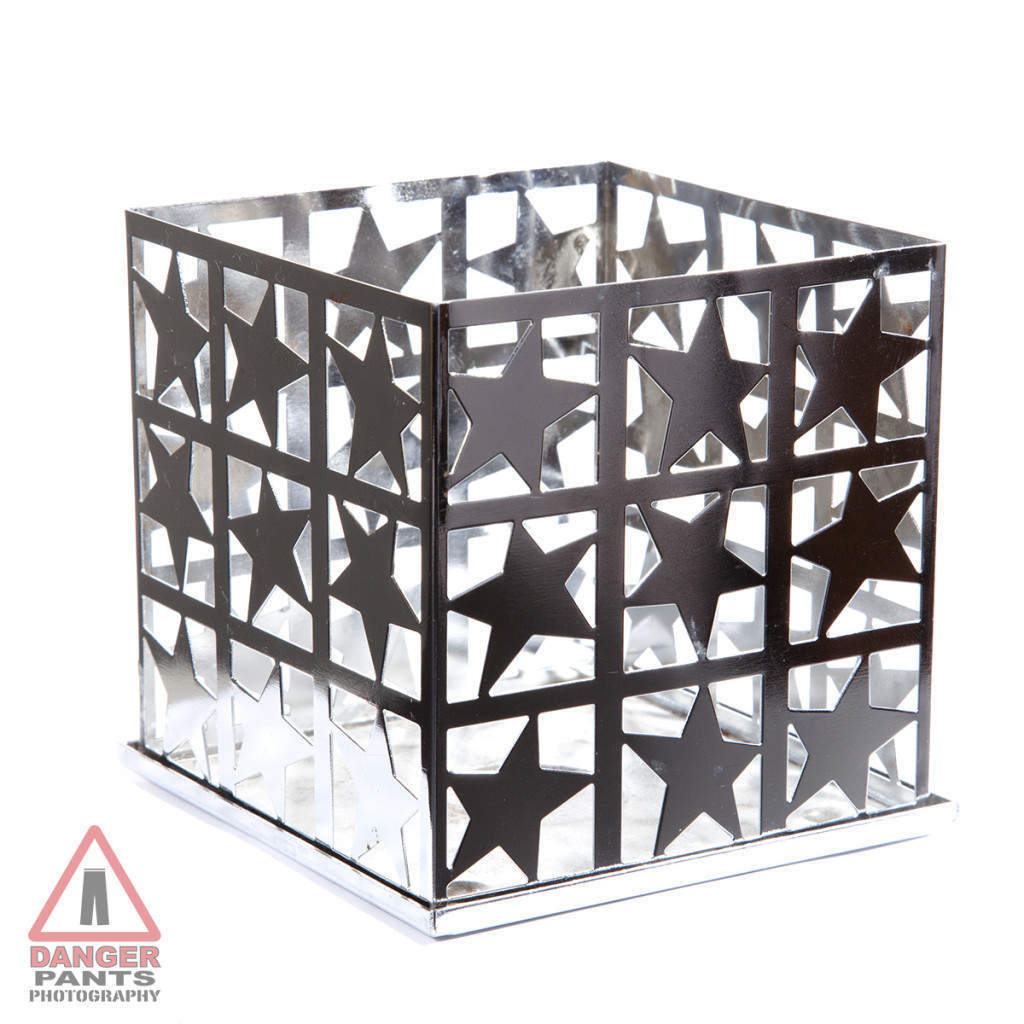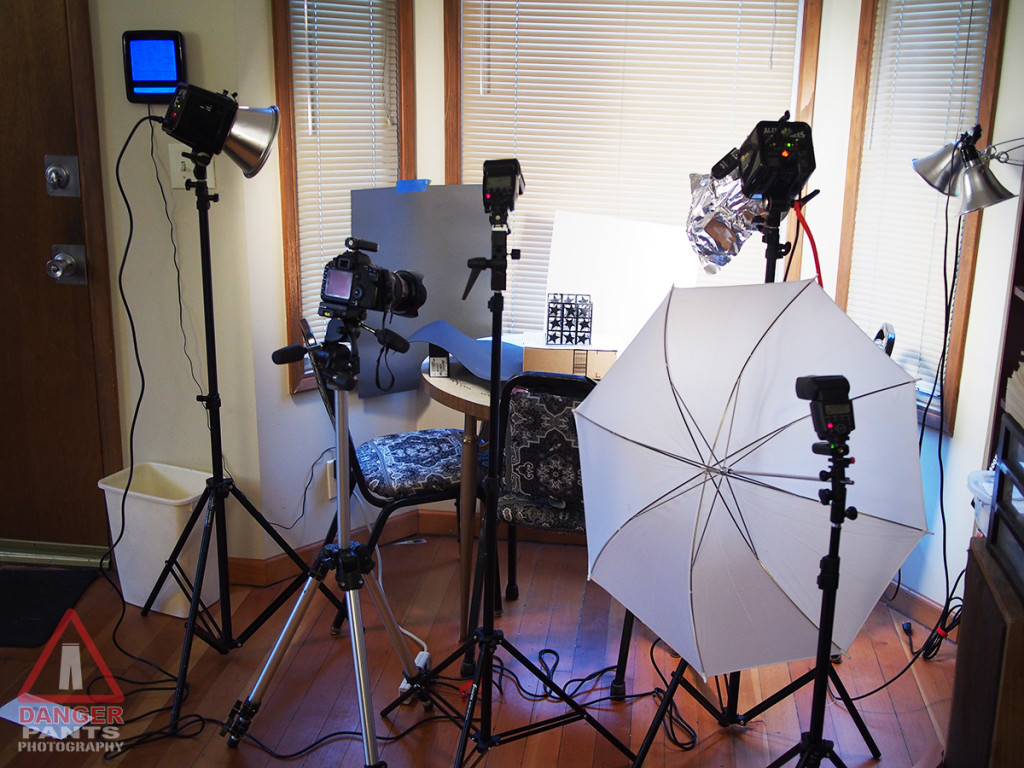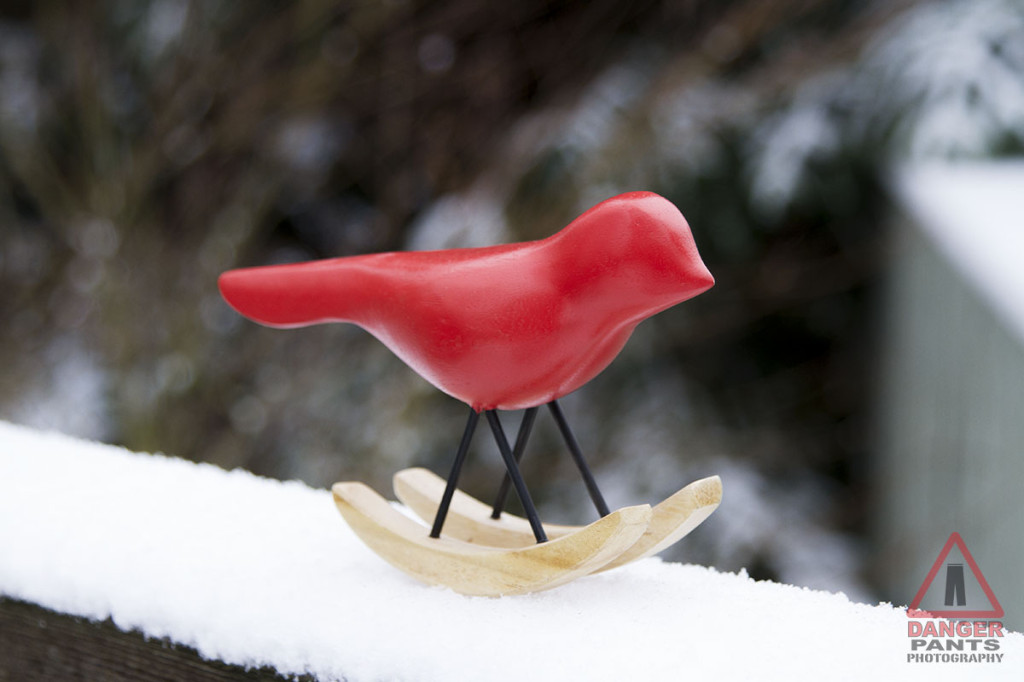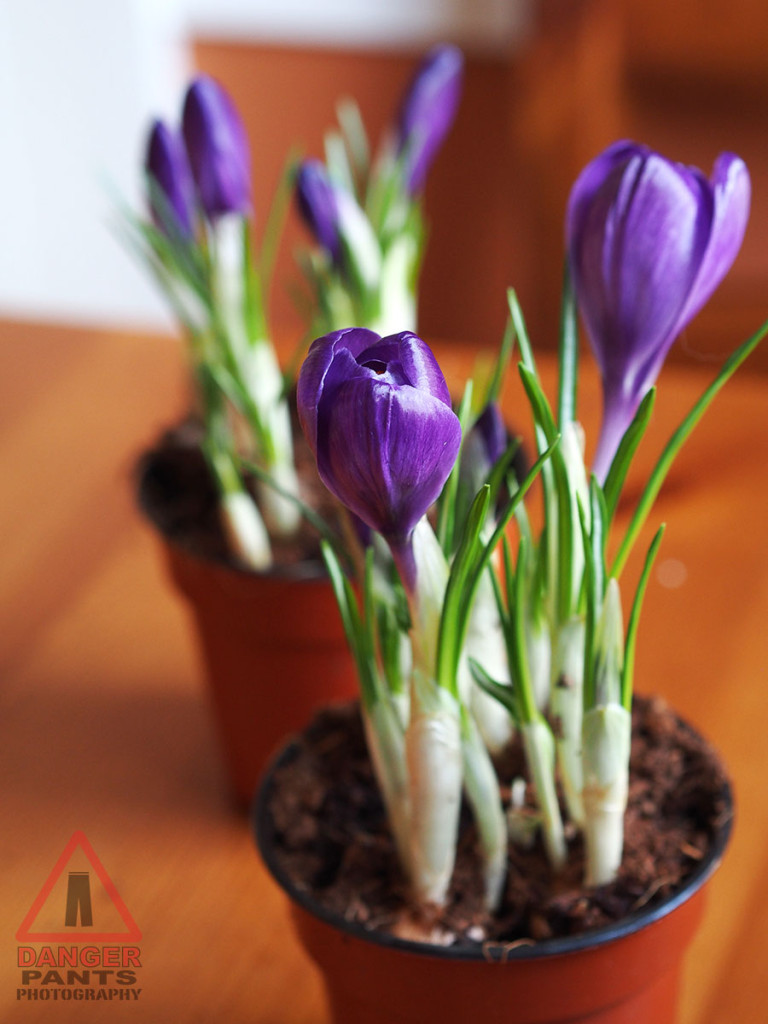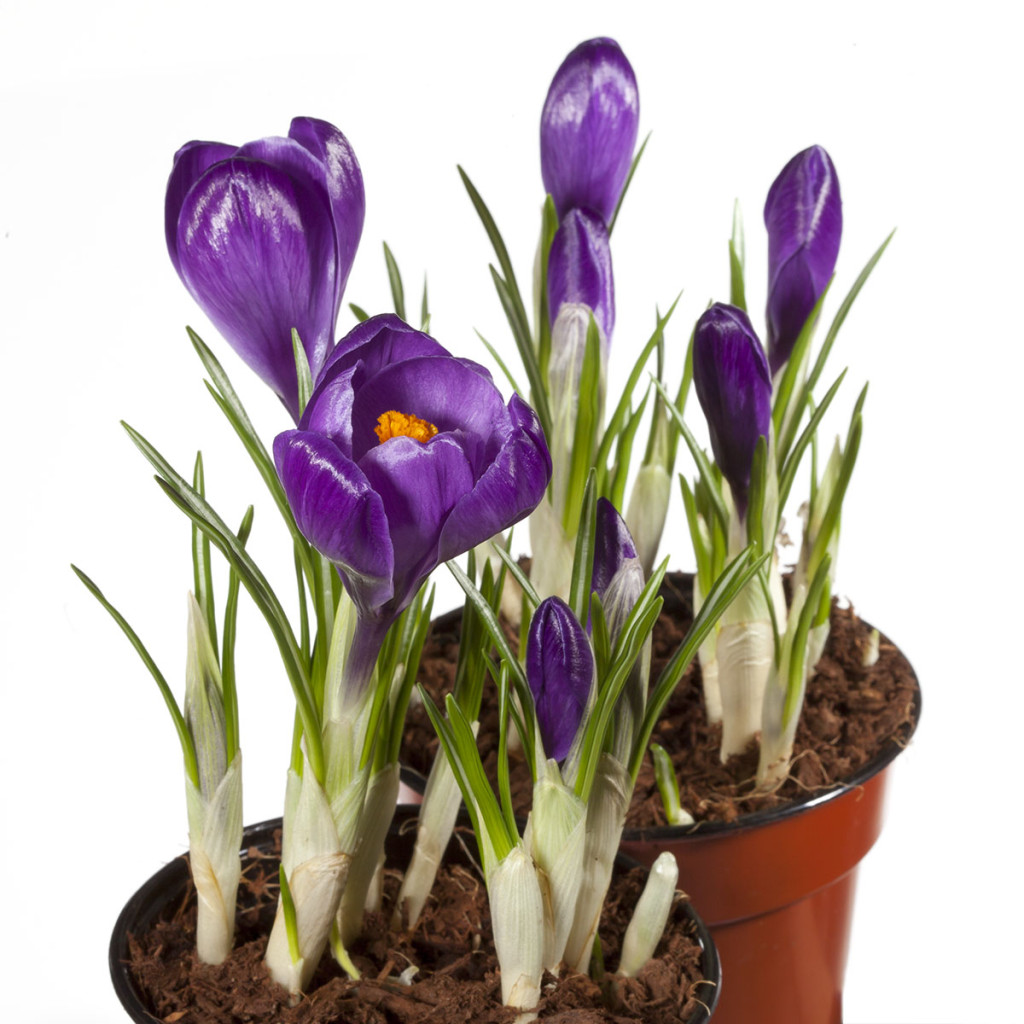In my path to becoming a well-rounded photographer, I decided I needed to have a little bit of product photography under my belt. The next step on this path was to tackle a difficult subject: metal.
Photographing metallic objects is hard because the light is comparatively difficult to get right. It’s easy enough to throw up some light and end up with a picture. However, that picture will be flat and uninteresting, and probably won’t look much like metal. We’ve got a visual vocabulary for metallic objects now, after a hundred and fifty years of photography, and thousands of years of painting. You expect to see the metal object show a range of tones from near black to near white. Color doesn’t really look right, unless it’s a very lightly tinged blue color. You typically want to see a curving line, if you see a line at all, where light and dark meet on a smooth surface. Here’s an example of not doing it right:
There are too many bright tones, and no real dark tones to speak of. The left side is showing a distinct orangey color from the wall and the shades. I also didn’t realize how dirty my product was until after I reviewed the first batch of photos. It still looks like metal, but it doesn’t look very good. This was with two lights, and was the first shot I took of this object.
I went through a series of photos after this, moving lights, removing umbrellas, moving again, shifting camera angles, cleaning my subject, eventually adding lights until I had every strobe I own trained on the thing. I finally had a result I was pretty happy with (although ideally I would clean more of the wax off of it):
It looks like metal. It has a bit of a highlight on the otherwise-dark side. It’s cleaner.
And the inspiration for this whole post? The crazy-looking setup it took to get here:

